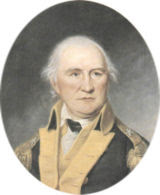 Is there a way to truly measure work effort? The time it takes of x period of days/weeks/etc. to complete a task? We typically record our time at the end of a week (or more) in some system for costing, but how accurate is our memory at the end of a busy week? And how truthful are we about the time something actually took to complete? Many times our recorded hours are based on the original estimate - this ensures that we are not criticized for under estimating OR rushed the next time we provide an estimate (if it becomes understood that we always over estimate by some percent). Cameras could be set up to watch us, but could they capture our thought process? or take into account how effective we're working during certain hours?
Is there a way to truly measure work effort? The time it takes of x period of days/weeks/etc. to complete a task? We typically record our time at the end of a week (or more) in some system for costing, but how accurate is our memory at the end of a busy week? And how truthful are we about the time something actually took to complete? Many times our recorded hours are based on the original estimate - this ensures that we are not criticized for under estimating OR rushed the next time we provide an estimate (if it becomes understood that we always over estimate by some percent). Cameras could be set up to watch us, but could they capture our thought process? or take into account how effective we're working during certain hours? Without the comfort in how a person records work effort, how can we estimate future work effort? Perhaps there are other ways to measure, a way that will 'derive' work effort. Can we develop an equation based on quality of what was delivered, duration of the task, some effectiveness scale for the person, complexity of the task, etc. Still all subjective to some degree, but observable and not dependent on the person that is estimating the work effort and also doing and recording the work. This means that the first few times a person works, we don't request an estimate from them, but just observe to gauge them and then using an equation develop their projected effectiveness and derive plans form that? This is how cannon's are gauged for accuracy, take a guess aim, fire them, see where they land and predict for the next round - constantly adjusting after each firing.....












